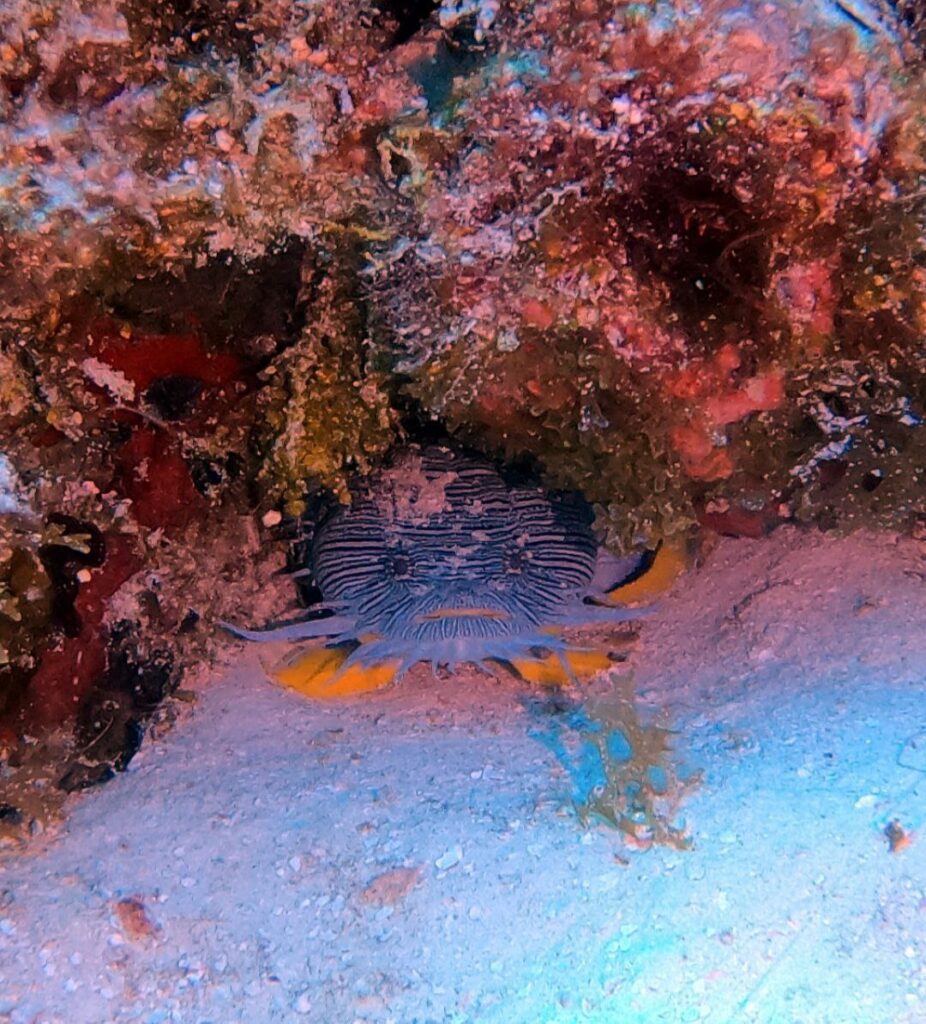You can find the Splendid Toadfish at various dive sites in Cozumel. Although it was once thought to be endemic to the island, it has also been spotted in other areas of the Caribbean, such as Belize. Let’s just say it’s not “technically endemic” to Cozumel, but it’s definitely a standout species in the island’s marine life. This is where most of its population is concentrated, and you won’t find it anywhere else in the world.
What makes them so splendid? Well, unlike their darker-colored toadfish cousins, this handsome fellow sports a vibrant purple body with white and black stripes. It has a wide, flat head (which it does share with its relatives) and a distinctive little “beard” (kind of like your friend with six scraggly hairs who thinks he’s sexy). It also has eight fins, and all except the pelvic ones are a bright yellow. In short, it’s much flashier than its relatives.

The Sanopus splendidus (sounds like a spell from Harry Potter, but that’s its scientific name) lives in shallow reefs (10 – 25 meters // 33 – 82 feet). You’ll usually find them hiding in crevices or cracks within the reef. You can only see their little faces, and their “beard” often gives them away when you’re searching for them. They measure between 10 and 15 centimeters (4 – 6 inches), though the largest recorded one reached 25 centimeters (10 inches). They’re shy creatures—if you get too close, they’ll retreat even further into the reef. Some guides use “tricks” to coax them out of their hideouts, but please don’t encourage this behavior. Don’t disturb marine life. We are visitors and must respect the environment. If you want to see them in their full glory, your best bet is a night dive. That’s when they come out to hunt smaller fish, snails, and polychaete worms. It’s important not to shine your flashlight directly at them to minimize disturbance.
A defining characteristic, and the reason behind their name, is the croaking sound they make—very similar to a toad’s call. Gen Z might not get this, but the best way I can describe their sound is like an old Nokia phone vibrating. Some scientists believe the males make this croaking sound to attract a mate. Females release a scent when they’re ready, and once they meet, they mate. After the female lays the eggs, she leaves the scene, and the male stays behind to guard them (same as human dads, right?). Many of us could learn a thing or two from these incredible animals!
Although they’re not considered an endangered species, they are vulnerable. Keep this in mind when visiting Cozumel’s reefs. I’ve found them at dive sites like Punta Tunich, Paso del Cedral, and Paraíso, but I’ve had the most luck spotting them at Yucab. Enjoy this beautiful little creature responsibly!
